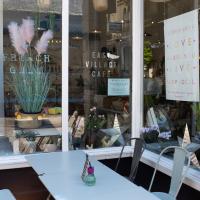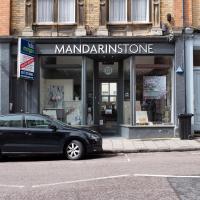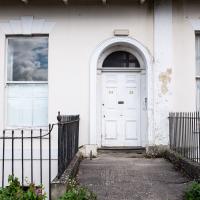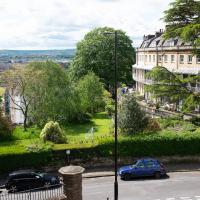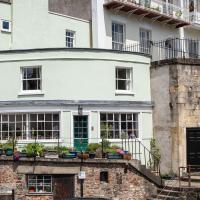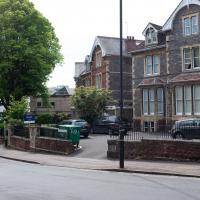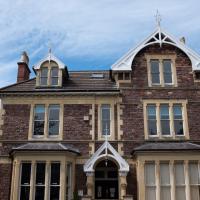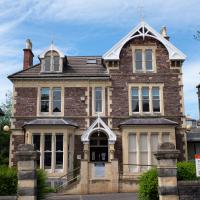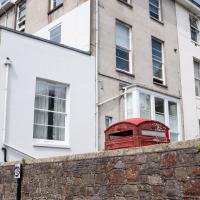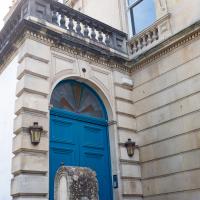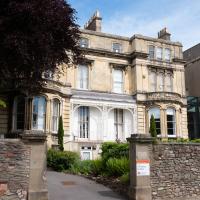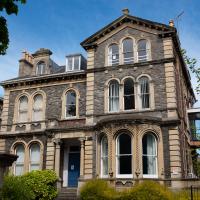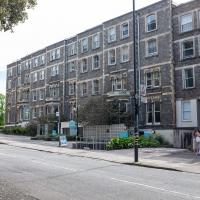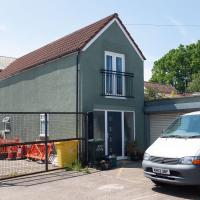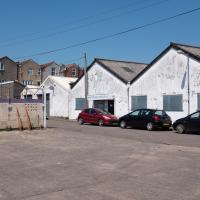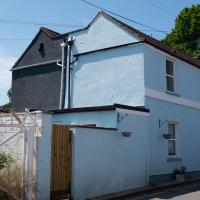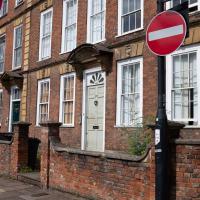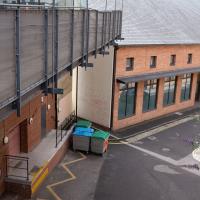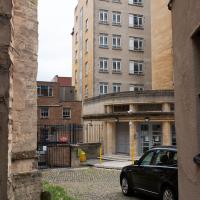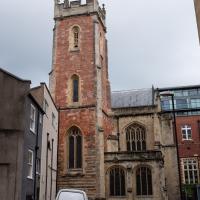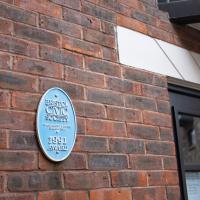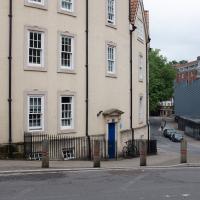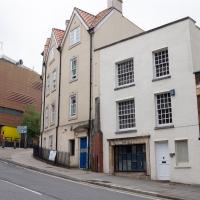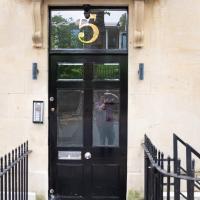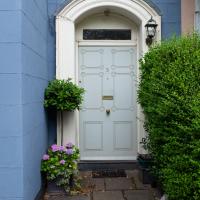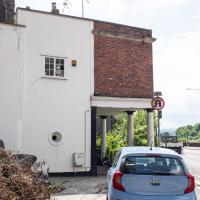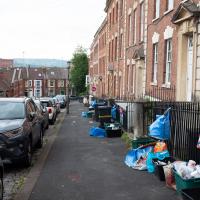Tagged: property
Bocye's Avenue Windows
19 May 2021
I just nipped up to Clifton Village to get a coffee, though I did manage to walk down a little alleyway I'd not really noticed before. Or perhaps I had noticed it and it looked private, but today I felt like wandering up its twenty or so feet anyway... The reflections in the shop windows on Boyce's Avenue gave me the idea to take a few snaps of them, so that's the majority of my small amount of snapping today.
Shop Fronts of Regent Street
22 May 2021
I didn't even think I'd manage to get out today, such was the weather forecast. As it turned out, it's been quite a nice day, and I managed to nip up to Clifton Village to pop to the Post Office. As with my last outing, I decided after snapping one shop-front on Regent Street that I might as well snap the whole row, and muse on a few of them, the only service I really offer over and above Google Street View for a lot of my pictures 😀
The Joy Raj do good food, from what I remember. I've never had any need for family law. Surprisingly, it was a hairdresser before it was a law firm.
Named after its cross-section from above, I've always assumed. Anyway. That's the last shop on that side of the road, so apart from the one I missed on the starting corner, Awakn, that's snaps of all the shops on the west side of Regent Street for you.
So the Paragon kids play football? I'd sort of assumed there would be miniature Rugby posts, or perhaps a fives court.
The End of One Terrace and the Middle of Another
26 May 2021
Just a quick trip up to Clifton Village to enjoy a bit of sunshine and grab a coffee. No new roads, and only two pictures, but I did at least snap a plaque I'd missed related to some recent reading, and enjoy a quirky Clifton Village house.
I love this quirky little quarter-cylinder of house, with what looks like a sliver of wedge-shaped top floor behind it and the little below-pavement cellar space behind. I have no idea if the big black door on the right is also related to it, though on reflection it's probably more likely to lead to the under-stairs basement of 1 Royal York Crescent, up and to the right.
It and number two are clearly converted shops or pubs—number three remains The Portcullis pub, of course, and they all get a listing together. "Early C19. Render with limestone ashlar, party wall stacks and pantile hipped roof..."
Another Day, Another 50 Metres
29 May 2021
I met my friends Sarah and Vik at Riverside Garden Centre today; I needed to buy some compost for repotting my wildly-overgrowing aloe vera, and I went a little bit out of my way to knock off a stretch of Ashton Road. It was a pleasant enough walk in the surprisingly warm (and surprising-not-tipping-it-down-on-a-Bank-Holiday-weekend) weather.
I managed to knock off a reasonable chunk of the roads I had left to walk around the University at the north-eastern extremity of my mile on this nice sunny walk. As well as being impressed by the number of big townhouses now occupied by various departments, I took some time on my way there to check out a war memorial, and some time on the way back to do a little extra wandering of Berkeley Square.
An economist, and one of the first people to take the Tripos at Cambridge. She and Alfred Marshall, her former tutor, founded the teaching of economics at University College, Bristol.
This used to be a big hotel, starting off as a single villa and gradually expanding to a 250-bedroom giant by the 1950s. Currently it's student accommodation. It was run by John Dingle, an English chef who dreamed of being as well-regarded as his French counterparts.
The University is planning on knocking it down and putting up a very modern-looking library. I rather like it.
Bank Holiday Street Art
31 May 2021
A nice warm Bank Holiday Monday saw me walk back over to Bedminster to do justice to something we glimpsed on my last wander. Along the way I spotted a couple of new pieces of street art tucked away on the south side of the Cumberland Basin Flyover system, so this turned into a micro-graffiti walk.
Apparently this is 34 Baynton Road. Looks like just a tiny, isolated house, stuck in a very odd little corner.
Set back behind the shops on the main road is this little pair of houses. All well-kept and tidy, and not quite as odd a place to be as the one that's isolated in the car park behind them, but still quite a strange location.
Leigh Woods Solo
19 Jun 2021
I hadn't really planned to go out for a wander yesterday; I just got the urge and thought "why not?" (Well, the weather forecast was one possible reason, but I managed to avoid the rain, luckily.)
I wanted to finish off the A369—as it turns out I may still have a small section to go, but I've now walked the bulk of it out to my one-mile radius—and also a few random tracks in Leigh Woods. I'm still not really sure that I'm going to walk them all, especially after discovering today that "the map is not the territory" applies even more in the woods, where one of the marked tracks on the map wasn't really that recognisable as a track in real life... I'm glad I'd programmed the route into the GPS in advance!
Anyway. A pleasant enough walk, oddly bookended, photographically at least, by unusual vehicles. Leigh Woods was fairly busy, especially the section I'd chosen, which was positively dripping with teenage schoolkids with rah accents muttering opprobrium about the Duke of Edinburgh. I'm presuming the harsh remarks were more about taking part in his award scheme than the late Consort himself, but I didn't eavesdrop enough to be certain...
Or that's what is says on the gate, anyway. There are a lot of big posh hidden-behind-big-walls houses in this area.
I guess it's more to reduce road noise than privacy, but it seems a shame these lovely-looking houses are all just peeping over giant hedges and walls.
This looks like a road on the map; I just took a photo to remind myself that it's actually someone's driveway so I don't need to go back and walk it :D
Library, Bookshop, Coffee
03 Jul 2021
I was headed into town to return RA Gilbert's biography of AE Waite to the library and along the way I noticed that Dreadnought had finished their refurbishment, but wouldn't be open until midday. That left me some time to kill, so I bimbled around the old St Augustine's/Gaunt's area for a while, then headed up Park Street for a coffee and a snack to eat on Brandon Hill before heading home the way I'd came so I could pop in and buy a pamphlet on the Hot Well I'd been interested in for a while.
I imagine this is the house whose owners also own the plot with planning permission; it seems to be the end of their back garden.
Though what caught my eye was the barely-visible slogan on the side wall in the middle of the picture: "I DID MY FIRST GRAFFITI HERE WAY TOO LONG AGO".
Anyway. Then I popped along the walkway to return the biography of AE Waite I've just finished, and to discover if the library's reference section had re-opened yet. It hadn't.
I had a note in my reminders to look for a "niche in the angle of the corner house of Pipe Lane and Frogmore Street", I think because of a reference in a book I'd been reading. And I have a feeling the book might've been written before this block was redeveloped; I couldn't find any niche. I also can't remember the book it was in, so this little side-trip was something of a wash.
This is, of course, the route of the Carmelite pipe. I think this is the spot where it uses a siphoning action to run uphill for a bit.
A Cliftonwood Revisit with Lisa
10 Jul 2021
Lisa had a couple of hours to spare before going up in a hot air balloon (exciting!) so we went for a quick local walk, revisiting a bit of Cliftonwood we've seen before, exploring the secret garden I'd visited before that I thought she'd enjoy (I didn't take any new photos there) and then pushing on to another garden, Cherry Garden. Last time we passed this way, I'd noticed the gate, but we hadn't gone in as I'd assumed it was private. I'd since found it on CHIS's list of communal gardens in Clifton, so I wanted to have a look inside this time, and try to figure out whether it was private-communal or public, and possibly Council-owned, like several of the other gardens in Clifton.
Lunchtime Zig Zag Climb
13 Jul 2021
A snappy little trip up the Zig Zag to the shops. It's a steep old route, the Zig Zag, going from just over river level to about the height of the suspension bridge (101 metres) in a compact switchback of a footpath.
I was too busy struggling to breathe to take many snaps of the actual Zig Zag (I've been trying to make it up all the way without stopping the last few times, but I've not quite managed it yet). I did at least take a few snaps either side on this quick lunchtime jaunt to fetch coffee (Coffee #1) and a sarnie (Parsons) from Clifton Village...
But I don't think it's the original end -- if you check this picture from a history pamphlet I posted on Twitter you'll see that it looks like the Colonnade used to curve around rather more, and there's an even better view on this drawing from the British Library collection of Hotwell Parade. Looking at the historic basemap layers there on KYP it certainly seems like sometime between 1855 and 1874 (both Ashmead maps) the first couple of houses in the terrace were lopped off, leaving only numbers 3, 4, 5 and 6. I imagine they were shaved off at the same time as the second Hot Well House was demolished, which was in 1867. It used to stand on Hotwell Point, sticking out into the river, and the whole lot was removed to ease navigation.
I've never actually looked at the Colonnade door numbers to see if they're still like that—I'll try to remember the next time I pass.
Apparently one of the reasons that collections are being missed (this lot's been on Albermarle Row for nearly a fortnight) is a shortage of drivers. There's a general HGV driver shortage at the moment, as well as a backlog of testing for new drivers.
